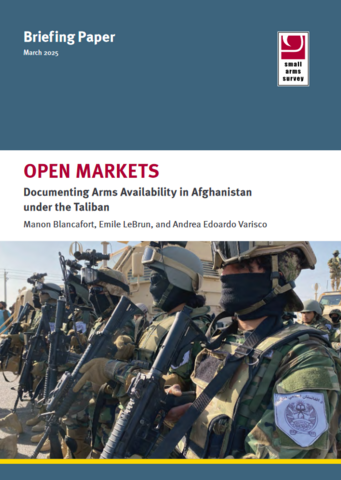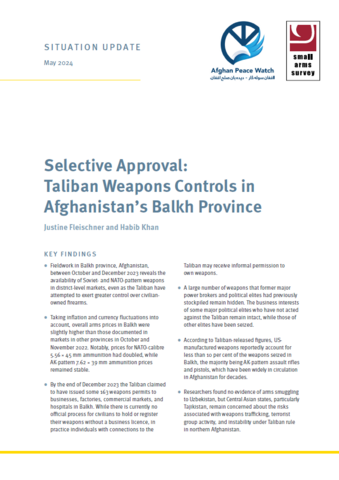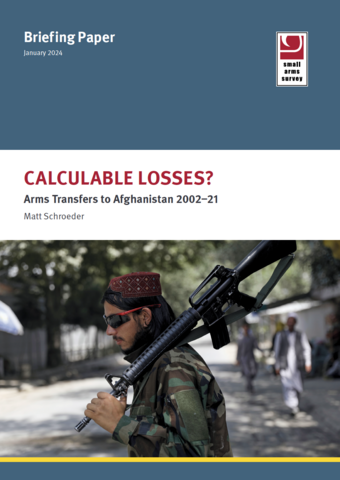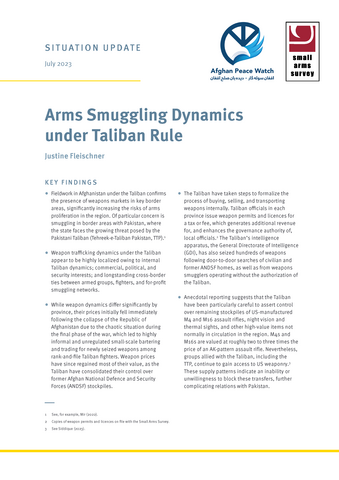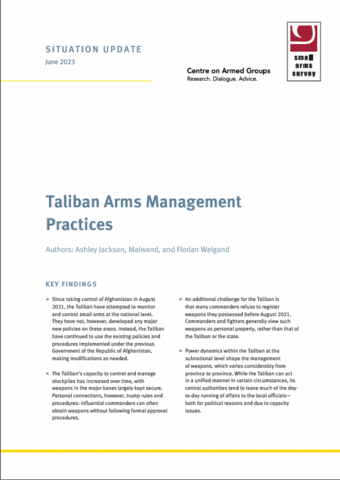The US withdrawal from Afghanistan in August 2021 and the subsequent collapse of the Islamic Republic of Afghanistan and its Afghan National Defense and Security Forces (ANDSF) has led to one of the largest captures of conventional arms by an insurgent group in modern times. In addition, large stockpiles of primarily Soviet- and Chinese-made weapons and ammunition already exist in the country, both in and out of government secure locations. The risks of arms proliferation from, within, and to Afghanistan to the wider regions (Central Asia to the north and South Asia to the south, with onward risks of proliferation to Europe and East Africa) are two-fold: first, of an increase in the deliberate arming of allied groups, and second, the possibility of catastrophic arms proliferation should the Taliban regime fall due to civil war or economic/financial collapse.
The Small Arms Survey’s Afghanistan project (2022–24) follows an initial six-month consultation process in 2021–22 to collect expert insights and on-the-ground experience on the risks of catastrophic losses of arms and ammunition in Afghanistan, drawing on experiences from other contexts (Libya, Syria, Iraq, and others). Insights gained as a result of that consultation process, and the findings of the confidential report, formed the basis of the project.
By conducting original research, working with partner research teams, and coordinating with key actors, the Small Arms Survey will support the development of a monitoring capacity for materiel being trafficked out of, within, and to Afghanistan. Project objectives include the following:
- establishing the information baseline on NATO-pattern and other weapons that are at risk of diversion and proliferation;
- establishing and coordinating an informal information-sharing body focused on the monitoring of small arms and light weapons in Afghanistan and the wider regions; and
- developing informational briefings for authorities from surrounding countries, including border and customs authorities, for the identification and interdiction of materiel from Afghanistan.
The project is designed to be highly synergistic with activities and initiatives by other non-governmental and international organizations. The Survey’s focus on gender mainstreaming in small arms and light weapons control policy and programming, which has been implemented through a number of separate projects, is informing this project.
For further information on the project, please contact:
Emile LeBrun |

